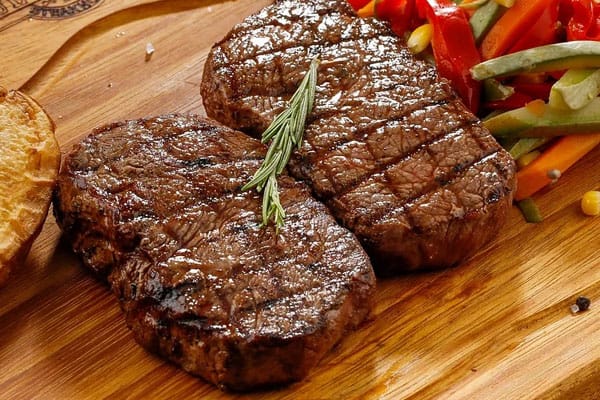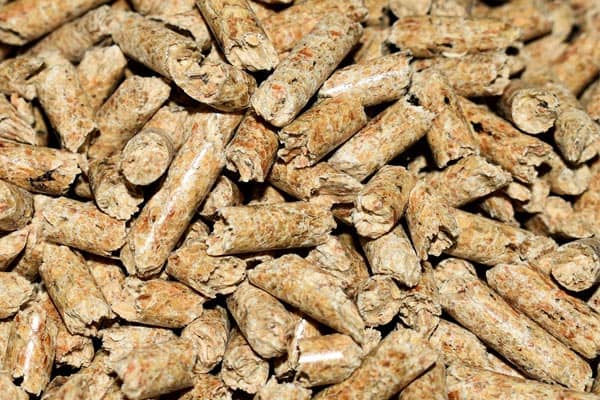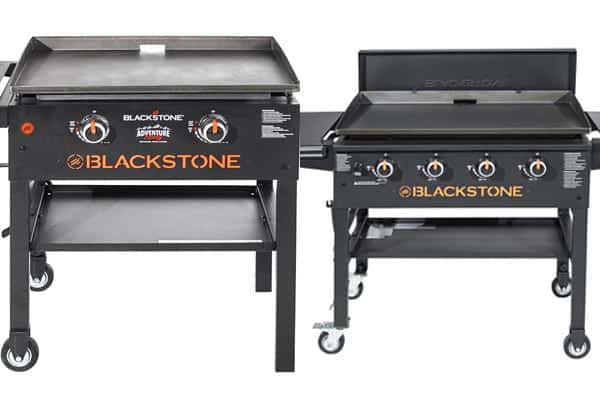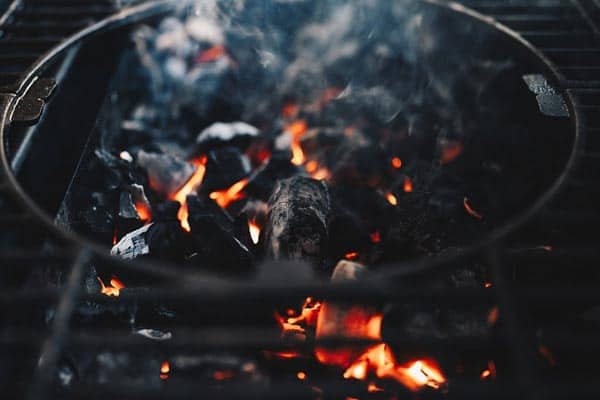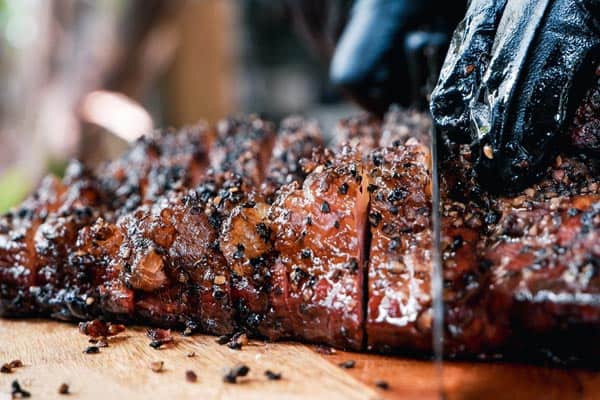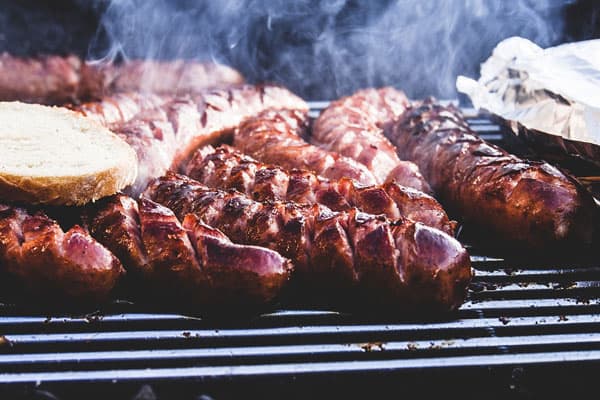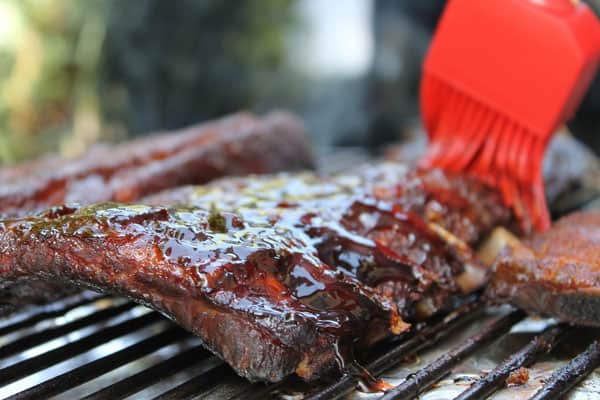Best Meats to Smoke for Beginners – The Ultimate Guide
When you buy your wood pellet grill, Baby Back Ribs, Brisket, and Pork Shoulder are all likely high on your list of cuts of meat, and you can’t wait to toss on your smoker and let it work its magic.
However, if you’re a beginner when it comes to smoking meats, it’s better to start off with other cuts before graduating to what many consider to be the holy grail.
We want you to be successful as you learn how to use your smoker and create delicious food, so we’ve put together a shortlist of the best meats to smoke for beginners.
Simply put, you want to start with less expensive cuts of meat when you first learn to smoke meats like sausage, pork chops, fish, turkey, chicken, and thick-cut steaks.
This way, you have room to learn how to smoke them, and it won’t hurt your wallet as much if they don’t turn out perfect.
Understanding What Meat Smoking Is
Meat smoking involves using smoke and controlled temperature to tenderize any meat fibers to make the cut of meat easier to eat while injecting a nice smoky flavoring.
This is simply another way to cook meat to make it more edible and easier to chew, and it works very well on everything from inexpensive pork shoulder to more high-end brisket or ribs.
Every cooking process uses heat and heat transfer to cook meat, and a smoker uses the smoke itself as the heat source that it transfers using radiation.
The timing, how quickly the temperature rises, and the cut of meat are all huge factors that will help you determine how your final product turns out, and this is why many people consider smoking meat to be an art form that takes time to master.
Six Types of Meat That Are Perfect for Beginners to Smoke
The internet is a wealth of information regarding complex smoking journeys like a 10 hour plus brisket, but you can work up to that. To start, we’re going to outline how to prepare and smoke the following cuts:
- Chicken breasts or thighs
- Fish fillets
- Pork chops
- Sausage
- Steaks or beef
- Turkey breasts
How thick and large your particular cut is will factor into how long it takes to smoke it from start to finish. For cuts that take hours upon hours to do, the large amounts of fat in and on the meat help it be more forgiving while keeping the meat very flavorful and moist.
You can form a pellicle on your cuts of meat before you smoke it to trap more of that delicious smoke flavor.
Smoking Chicken Breasts or Thighs
Chicken breasts or thighs cook very rapidly because they’re much smaller than other cuts, and the easiest way to smoke it is to create a brine and soak it overnight in a mixture of 30 grams for every cup of water.
- Curing or Brining Time: Minimum of three hours to overnight
- Pellicle Formation: One to three hours after refrigeration
- Smoking Time: One to two hours for chicken breasts at 210-degrees to 280-degrees
- Total Time: 5 to 13 hours
Smoking Fish Fillets
Fish smokes up wonderfully on smaller and portable smokers on low, and salmon or trout are fatty fish that absorb the smoky flavor wonderfully.
They come packed with healthy fat, and you can easily insert a temperature probe into the smoker to make sure you stay between 210-degrees and 250-degrees.
This will help you get a more consistent outcome with flaky, smoky fish that is perfect for eating now or drying out to store.
- Curing or Brining Time: Minimum of 15 minutes to eight hours or overnight
- Pellicle Formation: One to four hours after refrigeration
- Smoking Time: Between 15 and 30 minutes at 210-degrees and 250-degrees
- Total Time: 15 minutes up to two hours
If you’re not sure if your fish is done or not, press it with a fork. You want to see the fish flake easily, and this is a sign that it’s ready to eat.
Since fish is a less dense meat, your fish will cook much faster than you may originally think, and this makes it easy to overcook and dry out if you don’t watch it carefully.
Smoking Pork Chops
Pork is very dense meat in general, and this means that it will take slightly longer than other cuts, but it should finish smoking in under two hours.
Using an indirect heat source is the key to getting moist finished products, and curing or brining your chops before you smoke them will help them take the smoky flavor much better.
However, you can cure or brine them relatively quickly without wasting a lot of time, and you can add a few spices like garlic, chili powder, thyme, or onion powder with a little salt to enhance the taste.
- Curing or Brining Time: One or two hours in a 5% salt brine using one quart of water for five grams of salt
- Pellicle Formation: One to two hours after refrigeration
- Smoking Time: One or two hours at 210-degrees to 250-degrees
- Total Time: Three to six hours
You can use a meat thermometer if you’re not sure it’s done at the end of the two hours, and a safe temperature starts at 145-degrees and goes up. Another option is to cut a pork chop in half to see if it’s white instead of pink.
Smoking Sausage
Bought or homemade sausages readily gain that smoky flavor, and chorizo sausages work exceptionally well for smoking.
You want to get direct heat from below in whichever style smoker you use, but the smaller the smoker is, the better off you are with sausages because it allows them to get surrounded with the smoke very quickly.
You can also place your sausages into the refrigerator two hours before you put them in the smoker to dry them out and help them pick up that smoky flavoring better.
It’s good to use moderate to low temperatures since sausages aren’t very dense cuts of meat. You can cut one in half after the cooking time finishes to make sure they’re 100% done and safe to eat.
- Curing or Brining Time: None required
- Pellicle Formation: 30 minutes to four hours after refrigeration
- Smoking Time: 10 to 20 minutes with temperatures ranging between 210-degrees and 280-degrees
- Total Time: 30 minutes in a smoker, portable smoker, or on a gas grill with smoke
Smoking Steak or Beef
Smoking steak or similar cuts of beef is a lot like smoking pork chops because they’re denser, so this means that it cooks for a similar time.
You can add a basic salt and pepper seasoning before you toss it on the smoker to help enhance the flavor profile, and the total smoking time will vary depending on how your butcher cuts your steaks or beef cuts because of the thickness and weight can fluctuate.
To keep it simple, let’s say that you get steaks or cuts of beef that are between one and two inches thick, and you want boneless cuts if at all possible because this will make the entire process much easier.
You’ll need around an hour of indirect smoking for every 1.5-pounds of meat with the smoker set at 230-degrees, and you can quickly cure the beef before smoking it to help it lock in moisture by adding 1/2 of a teaspoon of salt for every pound of meat you want to smoke and let it sit 30 to 60 minutes before putting it in the smoker.
- Curing or Brining Time: Minimum of four hours to overnight
- Pellicle Formation: Two to four hours after refrigeration
- Smoking Time: One to two hours for beefsteak at 210-degrees
- Total Time: 7 to 16 hours
If you notice your steaks starting to show moisture or blood on the surface of the steak in the smoker, you’ll most likely get cuts that are now over medium cooked. You can pull them and have them done at medium, or you can leave them and go for more well done.
Smoking Turkey Breasts
Wild or farmed turkey can have large variations in size and fat content. Ideally, you’ll salt brine your turkey breasts overnight in a mixture of white wine, soft, hard herbs, fresh bay leaf, and garlic before putting them into the smoker at a moderately high temperature to hot smoke in 20 to 30 minutes. A smaller smoker works well for turkey breasts, and you’ll get moist meat with a very subtle smokey flavor.
If you decide to use turkey thighs, you can use Mexican spice combinations to create a smoked turkey thigh soup or stew. It’s also possible to smoke the whole bird at one time, but this requires more experience to get it right without drying it out.
- Curing or Brining Time: Minimum of six hours to overnight
- Pellicle Formation: One to six hours after refrigeration
- Smoking Time: Three to eight hours for a turkey breast at 210-degrees to 280-degrees
- Total Time: 7 to 16 hours
Many people accidentally undercook their turkeys when they smoke them. It can be a good idea to get a meat thermometer and periodically test the core temperature of your breast or thighs. You want the temperature to read 165-degrees or slightly higher to ensure it’s cooked all of the ways through.
Cuts of Meat to Avoid Smoking
Along with all of the types and cuts of meat you can smoke, there are a few that you want to avoid because they won’t turn out well.
Any meat that you consider to be “good” like a lean shoulder roast or a pork tenderloin should not go on the smoker.
Not only will you not taste the smoky flavoring, but the meat will dry out very quickly and become almost inedible by the time it reaches a safe temperature. Instead, you should cook them quickly over high heat.
How You Know Your Meat is Cooked When You Smoke It
You’ll use the same principles for smoking meat that you do when you cook it the traditional way, and the USDA has a list of recommended internal meat temperatures that you should adhere to when you smoke meat to avoid getting sick.
- Beef and Pork – Beef and pork’s final temperatures will fluctuate depending on how do you prefer it to be cooked, but the minimum temperature you should be over is 145-degrees. Pork and beef may have a slight pink tinge even after it reaches this minimum temperature, and it’s generally safe to eat at this point.
- Fish – Fish is slightly easier to tell when it’s done cooking because it’ll flake off when you press it with a fork or your finger. However, the internal temperature should be at least 145-degrees.
- Poultry – Generally speaking, any poultry should have an internal temperature that reaches over 165-degrees. When you cut into your poultry, it should be white with no traces of pink or it’s not done.
Five Quick Meat Smoking Tips for Beginners
Learning how to smoke meat and set up your smoker for the first time can be very intimidating, but there are several easy tips you can use to help you pull off a great finished product.
We’ve picked out five great tips you can use to learn how to successfully smoke whatever cuts of meat you want from beginner to expert.
1. Focus on Going Low and Slow
If it’s your first time smoking anything, you may be tempted to find a recipe and follow it to the letter. However, you may only need a smaller amount of smoke to get a tasty result, and it’s perfectly okay to deviate from any recipe you find to make it yours.
You could experiment with cooking some cuts on a higher temperature, so the smoke cooks the meat quicker before turning the smoke level down and trying to cook it low and slow. The longer it cooks, the more smoky flavor you’ll typically end up with at the end.
2. Be Careful Not to Overcook the Meat
When you’re trying to get perfect results, it’s very easy to accidentally overcook your meat and dry it out. One big mistake a lot of beginners make is adding too much wood for a long stretch because this can overcook your cut and ruin your results.
Instead, you should try using smoke for half of the cooking time and letting the heat finish off the cooking process for the second half to get a moist and flavorful result.
3. Don’t Open Your Smoker a Lot When it’s Running
The temptation to peek and see how your food is doing during the cooking process can be strong, but opening the doors or lid unnecessarily can result in the temperature fluctuating and dropping.
The smoke also drops off at this point, and it can take time to build back up to your desired range. In turn, this can actually delay your cooking time more or produce uneven results.
4. Aim for White Over Black Smoke
As you learn how to correctly use your smoker; you’ll quickly find that you need a specific balance with the amount of fresh air and smoke at all times.
If you don’t have it and your smoke turns back, this means that there’s not enough air to smoke ratio, and black smoke can easily destroy your meat and leave it tasting burnt.
If you have black smoke, open the lid, stir the wood chips, and open any vents on the top of the lid to increase the airflow ratio.
5. Have Good Ventilation
Fire requires oxygen to thrive and stay lit, and oxygen is also a critical component when it comes to creating smoke and supporting combustion.
You need good ventilation to produce clouds of white smoke, and this means that you want to keep the vents open and clear of any debris like ash during the smoking process. The smoke should travel over the cuts of meat before escaping through the lid’s ventilation system.
Meat Smoking for Beginners – Frequently Asked Questions
1. What are the best types of meat to smoke?
Some of the best meats to smoke are ones with a higher fat content like fish, ribs, pork shoulder, and beef brisket. Smoking can dry out some cuts of meat very quickly, and the higher fat content can help lock in moisture to keep the meat delicious and tender while it forms a nice bark on the outside.
2. Should you flip the meat when you smoke it?
Smoking meat is a very indirect and slow cooking method using a heat source that isn’t a direct flame. This means that both sides of your meat should cook evenly, and it’s generally frowned upon to flip it during cooking because you have to open the smoker and release a lot of heat and smoke in the process.
3. What is the optimal temperature range to smoke meat?
The best conditions to impart a lot of smoke flavor into your meat are the smoldering, lower temperatures that range between 570-degrees and 750-degrees for the wood temperatures. The resulting smoke temperatures will be much lower around 200-degrees, and this is what cooks the meat.
4. What happens to the meat when you smoke it?
Meat has a lot of connective tissue called collagen that breaks down when you cook it on low temperatures. The fat will slowly melt into the meat to render it and make it much more tender and flavorful than you’d get if you cooked it on high heat.
5. What temperature do your wood chips start producing smoke?
The wood in your smoker will start to produce smoke when it reaches temperatures between 570-degrees and 750-degrees. The type of wood will play a role in the smoking point, but you’ll get complex layers compounds that create the signature flavors and smell you love so much.
6. What are the biggest benefits of smoking meat?
The flavor, taste, and the bark that forms on the outside of the cut of meat are all huge benefits to smoking it, and these things are big parts of what draws people to this type of cooking. Smoking can also turn tough cuts of meat into ones that are so tender they fall apart when you touch them with your fork.
7. How do the grilling and smoking meat differ?
Grilling is a very high-heat cooking method called searing that creates a crust on the outside while trapping juices and flavor on the inside. Smoking also creates a crust outside the meat, but it retains the moisture content and tenderizes the meat by cooking very low and slow.
8. Do you have to brine the meat before you smoke it?
You don’t necessarily have to brine the meat or create rubs and apply them before you put it into the smoker, but many people like to perform this step because you can add spices that enhance the finished product.
